Rugby Positions: Explaining the roles of Forwards on the pitch
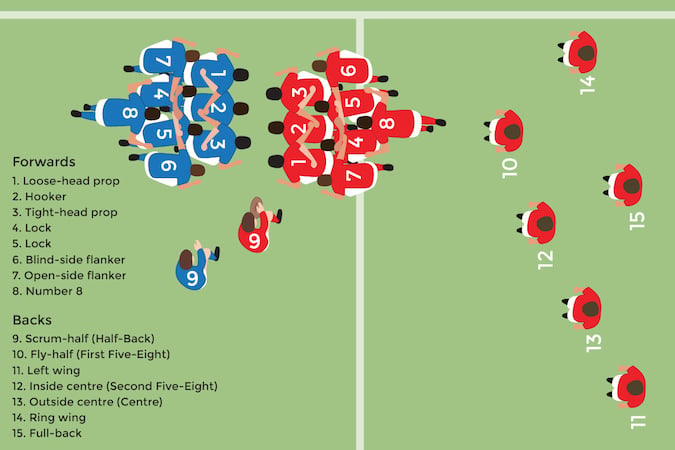 Image: SportSG
Image: SportSG
Click here to get your tickets to the HSBC Singapore Rugby Sevens!
With 15 players on each team, everyone has a different role to play in a game of rugby. The team is usually split into two, eight forwards and seven backs. Let’s take a look at the different roles the forwards play and how they use their size and strength to get the ball moving forward.
What are the roles of the forwards in Rugby?
Apart from using their body mass and power to gain ground in the match, the forwards usually take part in set pieces to contest for the ball such as a scrum and line out.
The scrum will see forwards from each team binding together in three rows and push against each other to contest for the ball. The forwards bind together tightly as a solid mass to prevent the other team from breaking up the pack weakening the effort of the scrum.
Type of forwarding positions and their roles in Rugby
What are Props and what is their role?
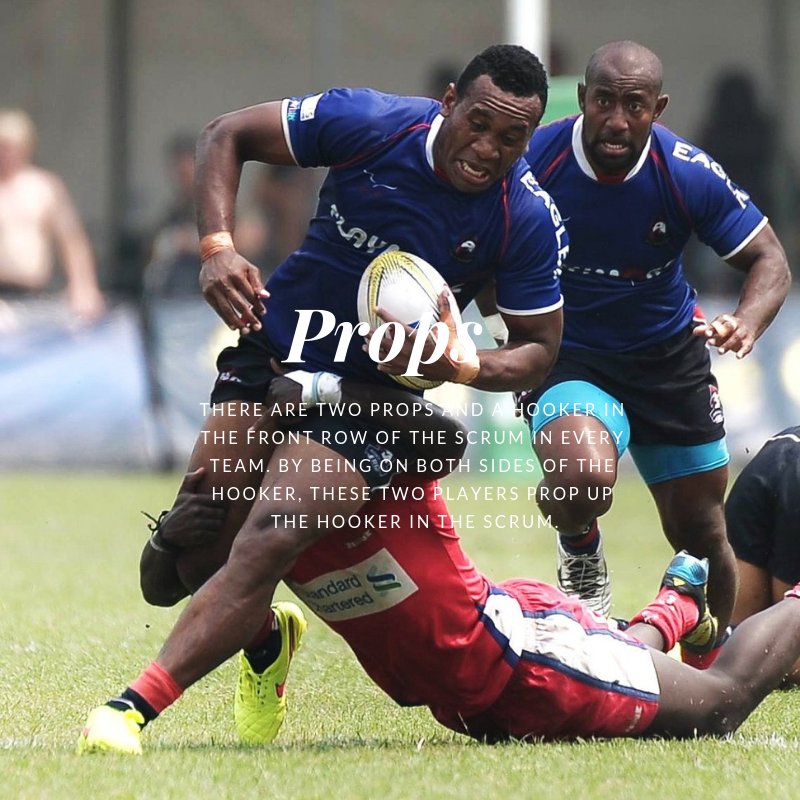
There are two props and a hooker in the front row of the scrum in every team. By being on both sides of the hooker, these two players prop up the hooker in the scrum. The one on the hooker’s left is called the loose head prop (no. 1), while the other is called the tight head prop (no. 3). Besides giving the hooker extra stability during a scrum, they are responsible for lifting the locks during a line-out and carrying the ball in open play.
What does a Hooker do?
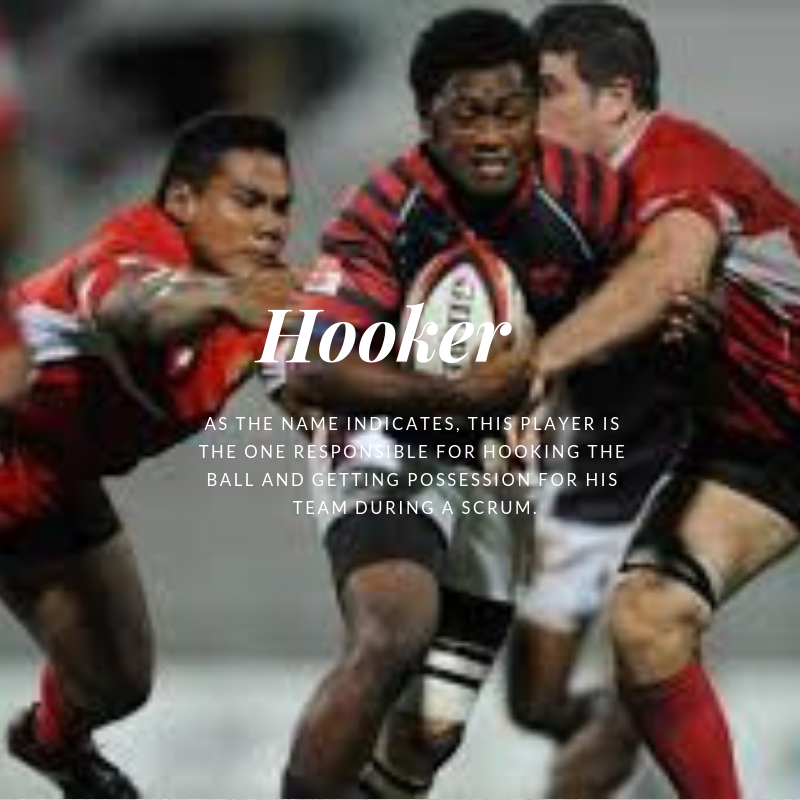
The hooker (no. 2) are usually smaller in size as compared to the props and usually the player that throws the ball in during a line-out. As the name indicates, this player is the one responsible for hooking the ball and getting possession for his team during a scrum. Together with the props, they form the front row of the scrum. The hooker also faces a lot of tackling from opponents as he is expected to carry the ball forwards.
What are Locks and how do they fit in?
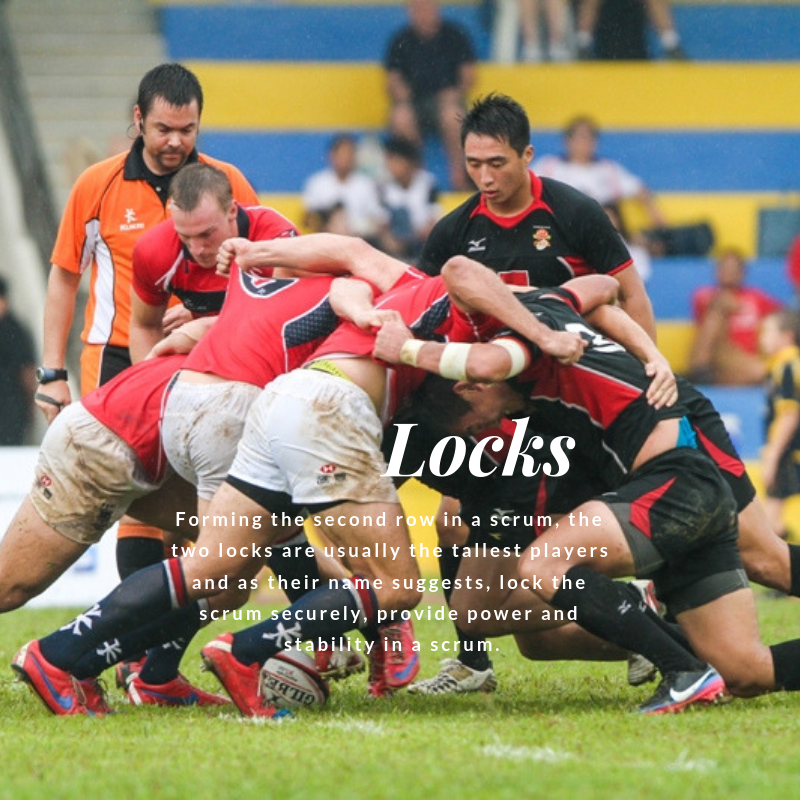
Forming the second row in a scrum, the two locks are usually the tallest players and as a result, are the main jumpers during a line-out. As such, the locks - numbers four and five - are also the ones competing for kick-offs, and as their name suggests, lock the scrum securely, provide power and stability in a scrum. These players are significantly larger in physique, and the strongest in the team because of the physical demands on them as the ‘engine room’ of the forward pack.
Flankers and their responsibilities
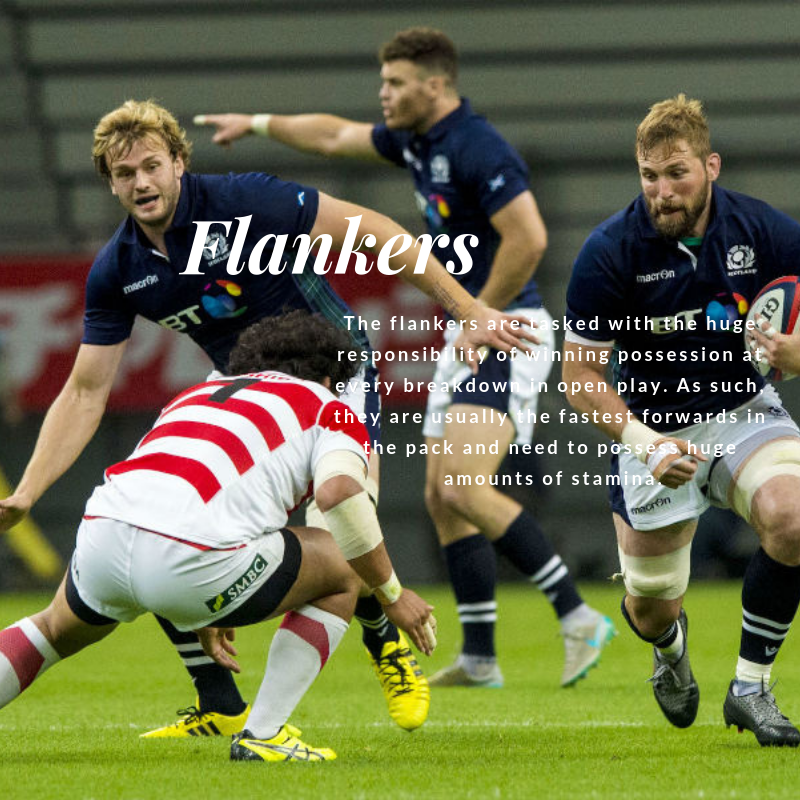
There are two flankers in each team - the open-side flanker (no.7) and the blind-side flanker(no.6). The flankers are tasked with the huge responsibility of winning possession at every breakdown in open play. As such, they are usually the fastest forwards in the pack and need to possess huge amounts of stamina to be able to be within striking distance of the ball at all times. In attack, their roles is to support the backs in open play and are often involved in rucks and mauls to gain possession. Open-side flankers are usually smaller in physical size and faster than the blind-side flankers. Flankers play an important role in a scrum especially when possession is lost to the opponent. They are responsible to stop any ball carrier from gaining ground when the ball is out of the scrum.
The mysterious Number Eight and his role
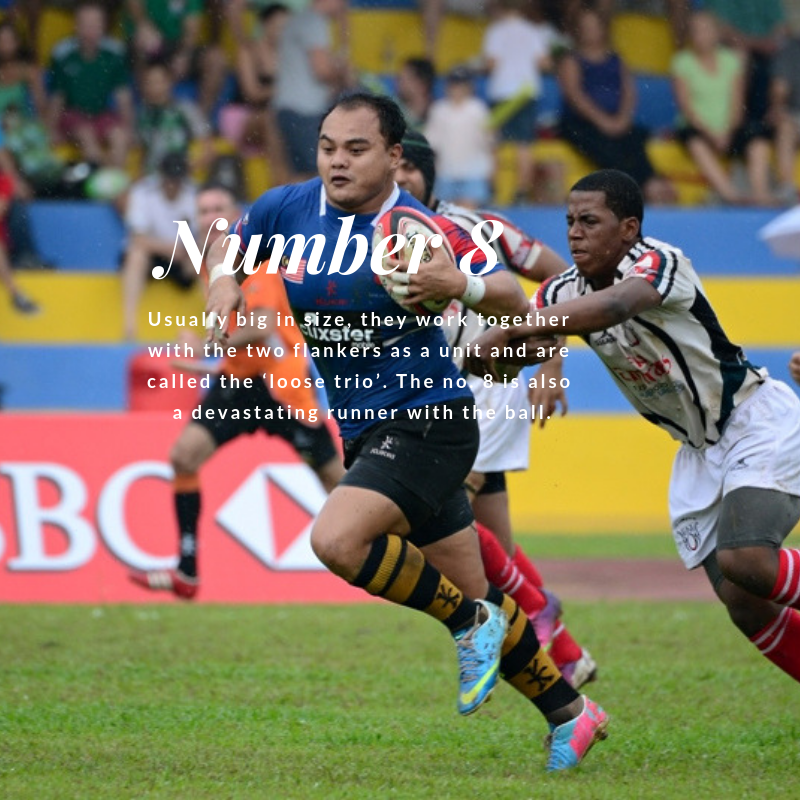
One of the players who sees the most tackling, the number eight is also the only player without a position name. Usually big in size, they work together with the two flankers as a unit and are called the ‘loose trio’. The no. 8 is also a devastating runner with the ball and whenever opportunities present itself, picks up the ball from the back of the scrum to attack by running at defences this technique is also known as ‘pick and go’.
Take a look at Argentina’s scrum against the All Blacks to see the importance of the forwards in the team:
What is the ideal body type needed to be a good rugby forward?
Generally, the forwards are the heavier pack on the team hence they are usually bigger, heavier and stronger. However certain characteristics would be ideal for certain positions to have such as the front rows should be square and have a stronger neck to prevent injuries in a scrum. Locks should be tall to win possessions during the line-out as well as a strong lower back and thighs to drive the scrum.
Which is the most challenging forward position in rugby?
It’s no doubt that playing as a forward in rugby you need to be tough and strong to take on all the hard tackles against your opponent. A study by the Ligue Nationale de Rugby (LNR) and Fédération Française de Rugby (FFR) have shown that the front row players have suffered the most physical injuries, especially the hooker. The study reported the hookers suffering from injuries such as bleeding, neck and knee injuries. Hence, it is crucial to have a stiff neck and shoulders as a forward to prevent yourself from being hurt.
To receive the latest updates on the happenings in the Singapore sports scene, or to find out more about some of the latest programmes on offer at ActiveSG, like our Facebook page here.





![ActiveSG Academies and Clubs Logo (Solid Colour)[8647]](https://www.activesgcircle.gov.sg/hs-fs/hubfs/ActiveSG%20Circle%202023Theme/images/ActiveSG%20Academies%20and%20Clubs%20Logo%20(Solid%20Colour)%5B8647%5D.png?width=150&height=65&name=ActiveSG%20Academies%20and%20Clubs%20Logo%20(Solid%20Colour)%5B8647%5D.png)



-01.png?width=200&height=141&name=Team%20Singapore%20Logo%20(Red)-01.png)



